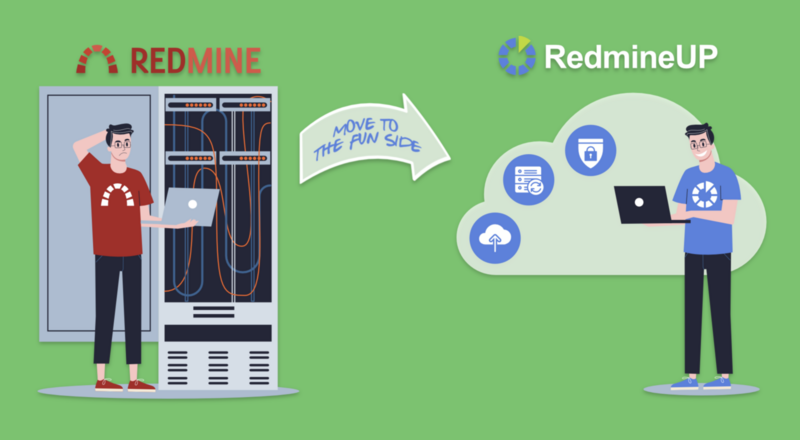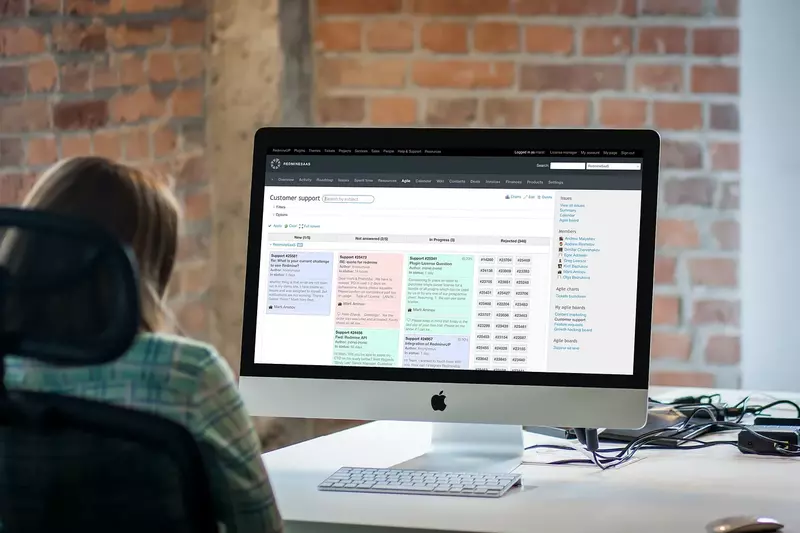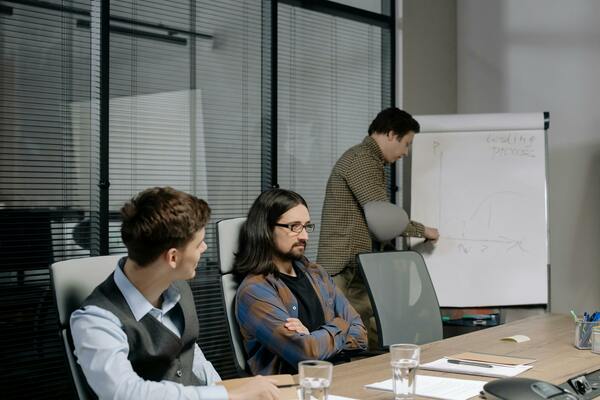For many organisations, Redmine 4 has been a reliable open-source solution for project management. However, as security threats evolve and collaboration needs grow, old version limitations can become a concern. .
This case study highlights how Crevier Group, a company located in Canada, leveraged RedmineUP cloud to streamline their project management processes and enhance team collaboration. Etienne Brault, IT Supervisor at Crevier, shares his experience transitioning from an on-premises Redmine instance (old physical server) to RedmineUP Cloud and the positive impact it has had on their organisation.
The Crevier Group is a family business that is built from generation to generation. Founded by Émile Crevier in 1945, the company began its activities in the retail sale of heating oil and then focused on the wholesale sale of fuel and petroleum products to independent resellers on the West Island of Montreal.
From this case study you will learn the following:
- Redmine maintenance challenges
- How to find stable and secure Redmine hosting?
- Key features of RedmineUP Cloud
- How to migrate from on-premise Redmine to dedicated hosting
- Benefits of Redmine migration
Redmine maintenance challenges
Crevier initially utilised Redmine 4.1.1 for project management. However, they encountered a few limitations:
- Security updates. Redmine is an open-source project, and while it has a large community, keeping it updated with the latest security patches can be a burden for internal IT teams. This requires staying informed about vulnerabilities and manually applying security fixes. You can view the list of known and fixed vulnerabilities on Security Advisories
- Redmine 5 upgrade. Upgrading Redmine to a newer version can be complex, especially if you have customized plugins or configurations. There's a risk of breaking functionality or introducing compatibility issues. Here is a comparison list of Redmine 5 and Redmine 4.
- DevOps and Ruby expertise. Maintaining any self-hosted Redmine requires in-house DevOps and Ruby expertise. This can be a burden for smaller companies that might not have dedicated IT staff or the budget to hire specialists.
- Backups and disaster recovery. It's entirely your responsibility to ensure your Redmine data is safe. This requires additional planning, resources, and testing to implement a proper disaster recovery plan.
- Limited support. While Redmine boasts a vibrant user community, official support is limited. This means troubleshooting intricate issues might take some elbow grease. Be prepared to dig through forums, explore workarounds, and potentially invest some time to find solutions.
Unfortunately, right before the new product launch, Crevier experiences an unexpected Redmine outage. Nobody can access project tasks, track progress, or communicate updates. Developers are unsure about the status of critical bug fixes and last-minute feature updates. This delays final product testing and creates uncertainty about launch readiness.
Etienne realised during the downtime crisis that their over-reliance on Redmine without a proper backup and disaster recovery plan had created a single point of failure. This realisation became a critical turning point for Crevier.
We're currently running Redmine on our server. We're interested in migration to your web-hosted RedmineUP solution to benefit from reduced maintenance and dedicated technical support. Additionally, we utilize Single Sign-On (SSO) with Azure Active Directory (Azure AD) for automated user authentication. Etienne Brault, IT Supervisor
Migrate to secure hosting
Don't waste your time on Redmine maintenance. Hire experts and focus on your projects
How to find the best hosting for Redmine?
Recognizing these challenges, Crevier embarked on a journey to find a stable Redmine provider that addressed their security concerns and offered a path for future growth. Their key considerations included:
- Auto-updated Redmine
- Access to daily backup from the admin panel
- Integration with SSO through MS Azure
- Redmine migration service
- Pre-installed plugins (Agile, Helpdesk)
- Data center location with ISO certifications
- Custom domain and third-party plugins
- Technical support
At Crevier, Redmine is mission-critical for our project management. However, maintaining our own server was a drain on IT resources. We needed a solution with expertise in Redmine upgrades and plugin integration to ensure a smooth transition and continued functionality.
As we explored our options, some key considerations emerged: access to migration assistance, pre-installed essential plugins to save time, data center location with ISO certifications for compliance and security, and the ability to customize the Redmine instance to perfectly fit our specific workflows
Key Features of RedmineUP Cloud
The search for an alternative led Crevier to RedmineUP Cloud. They discovered RedmineUP through a link on the official Redmine webpage, specifically referencing the services offered by RedmineUP.
Why RedmineUP? Several factors made RedmineUP an attractive solution for Crevier:
- Familiar interface. Unlike some alternatives that significantly altered the Redmine interface, RedmineUP maintained the original Redmine experience with additional features. This minimised the learning curve for their team.
- Seamless feature integration. RedmineUP seamlessly integrated the desired Agile plugin, providing the advanced project management functionalities they sought.
- Single Sign-On for Cloud Redmine. Crevier Group has multiple applications their employees use besides RedmineUP Cloud, like a CRM system, sales tools, and communications platforms. SSO with Azure AD would allow them to manage user access for all these applications centrally. This reduces administration and ensures consistent access controls across the organisation.
How to migrate from self-hosted to web-hosted Redmine

During a 15-days free trial of RedmineUP Cloud, Etienne decided to arrange a kick-off meeting and discuss all requirements with the account manager.
This section outlines the process of migrating a self-hosted Redmine instance to a hosted Redmine platform, like RedmineUP. It emphasizes the importance of planning, data backup, and testing before transitioning users.
Key Stages:
- Data backup. This crucial step involves creating a database dump and copying your Redmine attachments. Scheduling the backup for a low-activity period (e.g., Friday evening) is recommended.
- Non-Disclosure Agreement (NDA). Signing an NDA with RedmineUP ensures data confidentiality during migration.
- Migration process. Securely send the backup files to RedmineUP.
- Data transfer and testing. After data transfer, Etienne checked SSO authentification and the whole system with workflow.
Migration to hosted Redmine requires careful planning, data backup, exporting your current Redmine data, importing it to the new platform, and thorough testing before users are migrated.
Migrate to secure hosting
Don't waste your time on Redmine maintenance. Hire experts and focus on your projects
Benefits of Redmine SaaS
The migration to RedmineUP cloud proved to be a success. Etienne Brault highlights the key benefits they experienced:
- Always available Redmine. RedmineUP hosting comes with Service Level Agreements (SLA 99.8%) guaranteeing high uptime percentages. This translates to minimal downtime and improved project management workflow.
- IT team gets a break. Shifting server management tasks such as security updates, backups and performance optimisation to the hosting provider frees up the IT team to focus on core business needs.
- Enhanced security. The RedmineUP team specialises in server security, intrusion detection, firewalls, and regular vulnerability patching to minimise the risk of security breaches.
- Boost Redmine performance. The improved functionalities facilitated better communication of project goals, leading to increased team performance.
- Optimize Redmine for agile workflows. The Agile plugin and Kanban boards empowered the business team to manage tickets effectively, enhancing communication and project workflow.
By automating ticket creation with RedmineUP Cloud, Crevier has streamlined their workflow, achieving a notable 20% reduction in workload.
Kanban boards provide a visual representation of tasks, promoting transparency and reducing the need for clarification meetings or emails.

Conclusion
A big thank you to Etienne Brault, IT Supervisor at Crevier Group, for sharing his valuable insights! We wish him a stable and secure work in the cloud.
Cloud-based solutions like RedmineUP Cloud handle server maintenance and software updates automatically. This eliminates the need for in-house IT teams to manually install updates, reducing the risk of downtime during the update process.
The familiar interface, seamless data migration, and enhanced functionality have resulted in improved team collaboration, communication, and overall performance for the Crevier Group.


